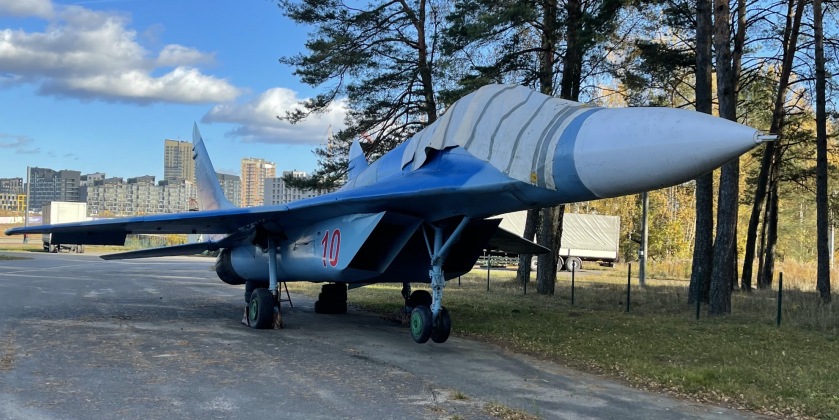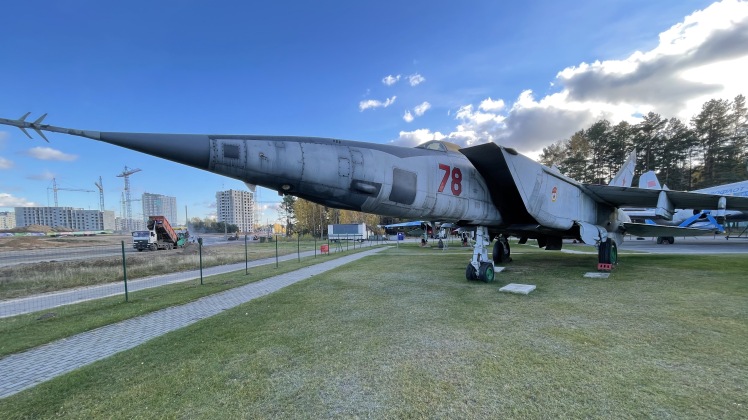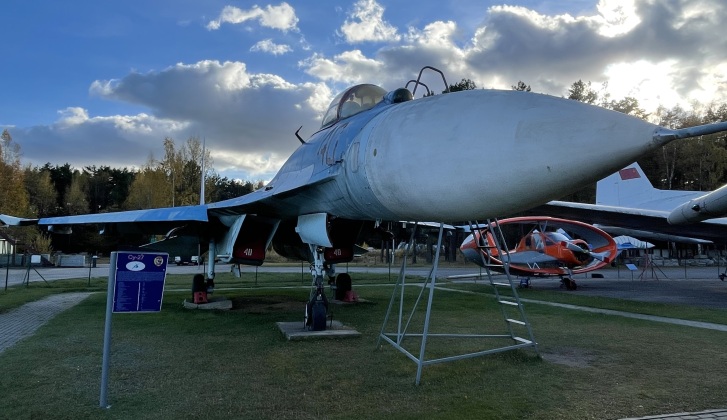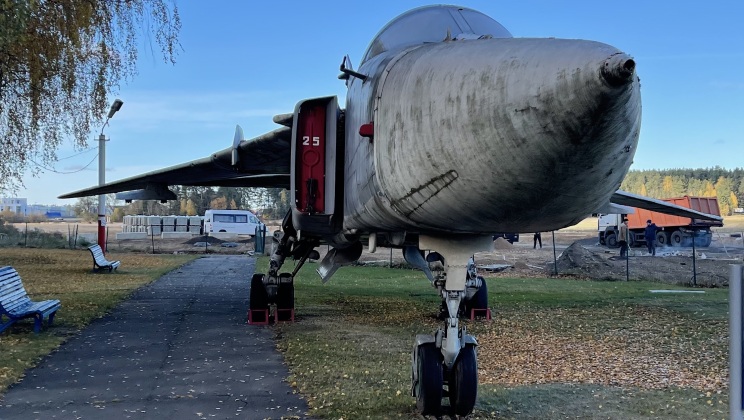On August 26 Belarusian Alexander Lukashenko announced that his country’s combat aircraft had been modified to deploy nuclear weapons, with local media reporting and then retracting a claim that this referred to Soviet-built Su-24 strike fighters. “Some time ago in St. Petersburg, we together with Putin announced that we would re-equip Belarusian Su-24 aircraft so that they could carry nuclear weapons… Do you think we’re just talking? Everything is ready!,” the president was quoted as saying by Belarusian news outlet BelTA, before this was removed from a later version of the article. The original quote did not in fact mention a specific class of aircraft – only that it would be a Sukhoi platform. Alongside two squadrons of MiG-29s, which form the bulk of the Belarusian combat fleet and its only non-Sukhoi combat jets, a single squadron of 12 Sukhoi Su-30SMs began to be deployed from 2019. 22 Su-25K/UBK ground attack jets also serve in a close air support role. The country’s Su-24 fleet, estimated at 42 aircraft in 1995, was retired from 2010-2012 with an estimated 12 airframes sold to Sudan, while its top strike fighter the MiG-25BM was retired even earlier in the early 1990s due to primarily its extreme operational costs. Restoring a Su-24 unit, arming the Su-30SM or even deploying low yield tactical nuclear warheads from the short ranged Su-25, have all been speculated as possibilities.

Members of the Military Watch team previously visited the Belarus Aerospace Museum and were able to see and photograph some of the combat aircraft inherited by the Belarusian Air Force when the Soviet Union disintegrated. Many of these served until the 2010s before the service moved to rely on the MiG-29 as its sole fighter class. The MiG-29 has proven popular despite not being the top Soviet fighter for any specific role, primarily for its balance of formidable air to air capabilities, particularly when modernised, and relatively low maintenance needs and operational costs. By contrast larger higher end fighters such as Su-27s or Su-24s were unaffordable for a small Soviet successor state’s defence budget.
The MiG-29 was introduced in 1982, with over 800 built for the Soviet Air Force alone, and was revolutionary in its time for its extreme manoeuvrability, ability to deploy from makeshift airfields, and for being the first fighter in the world with high off boresight capable air to air missiles. The fighter seen above was the latest addition to the museum, and while over 40 were inherited from the Soviet Union many have been retired with a portion even donated to the Serbian Air Force has aid. The remaining estimated 34 MiG-29s in service are expected to be retired before 2030, with modernisation having so far been conservative. What their replacements may be remains highly uncertain. The MiG-29M, MiG-35, or even the fifth generation Checkmate fighter if it does materialise, are possible replacements with similarly low operational costs, with purchases of non-Russian fighters remaining unlikely due to the need to retain interoperability with Russian units based in Belarus.

The rarest and most notable exhibit is the MiG-25BM Foxbat, a variant built for suppression of enemy air defences which was in production for the Soviet Air Force until 1985 and reportedly combat tested against Iran in shortly afterwards. The design capitalises on the MiG-25 airframe’s inherent high survivability as a result of its unmatched Mach 3+ speed and ability to fly well above the Armstrong Limit, at times twice as high. This has been tested against the top Western fighters of its era the F-14 and F-15 as well as the lighter F-4 and F-16. A unique flight performance was complemented by the MiG-25BM’s electronic warfare equipment allowing it to jam enemy attacks, and by a range of standoff cruise missiles primarily with anti radiation capabilities to home in on the radar emissions of enemy air defence systems.
Belarus inherited the large majority of the MiG-25BM fleet, but was unable to sustain them due to their particularly high operational costs. Other MiG-25 variants were also inherited and retired, although the last MiG-25s built for air to air combat and reconnaissance roles remained in Russian Air Force service into the 2010s. A modified MiG-25BM with modernised avionics could have represented an effective strike fighter for nuclear delivery roles, particularly due to its substantial range, but the fleet was quickly scrapped after its retirement with the only remaining two airframes being on display. Russia has yet to produce a comparable aircraft.

Also on display is a Su-27 Flanker, which is unique in that Belarus remains the only operator of the class worldwide to have retired it from service completely. Considered the most capable fighter fielded by any air force during the Cold War, which was an assessment strengthened when units were acquired by the United States for testing purposes and when Russian Su-27s trained in simulated combat against American F-15s. The aircraft placed the Belarusian fleet at a very high level on the European continental until their retirement in December 2012. Unlike the MiG-25s, however they were not scrapped and could theoretically be returned to service at a time of extraordinary need, although this remains unlikely even today despite Minsk’s unprecedented tensions with NATO.
While Russia has modernised some of its remaining Su-27s to the Su-27SM2/3 standard with next generation avionics and sensors, Belarusian aircraft continue to rely on 1980s armaments and technologies much like those in neighbouring Ukraine leaving them effectively obsolete. Regarding the rationale for retiring the fighters, which like the MiG-25 was largely due to their operational costs, Chief of the Air Force and Air Defense of the Armed Forces of Belarus Major General Oleg Dvigalev started: “Su-27 is a very expensive aircraft to operate, it burns a lot of fuel. It is inadvisable in conditions of the small territory of Belarus. Even for the sake of checking control targets we had to raise Su-27 from, lets say, the airbase in Baranovichi and keep it in the air for virtually 1.5 hours after the mission was over for the sake of consuming the rest of the fuel. An aircraft had to consume 2-3 tonnes of aviation kerosene for nothing. It was wasteful. Therefore, we no longer use the aircraft.”

A further exhibit with contemporary significance is a Su-24 strike fighter – a class retired from service in 2012 alongside the Su-27 with some airframes subsequently sold to Sudan. Approximately 30 are thought to remain in storage. The class was for years the only one in Russia or Belarus with precision strike capabilities due to the retirement of rival strike fighter classes such as the lighter Su-17. The revival of the fleet, although speculated, remains unlikely with the Su-30SM and Su-25 being more likely options should the Belarusian Air Force indeed be part of a nuclear sharing agreement with Russia. Su-24s in the Russian Air Force have been gradually replaced by the Su-34, which has been the most popular fighter class for the Russian Defence Ministry, while Russian Navy Su-24s have been replaced by the Su-30SM. The much more advanced and versatile Su-30SM has a significantly higher endurance that Su-24, which although unnecessary air defence duties provides the ability to launch precision strikes far beyond Belarus’ borders. Whether the Belarusian Air Force will expand its Su-30SM fleet, with only 12 having been ordered, remains uncertain but cannot be ruled out if alongside other duties the fleet is also relied on for nuclear delivery.
